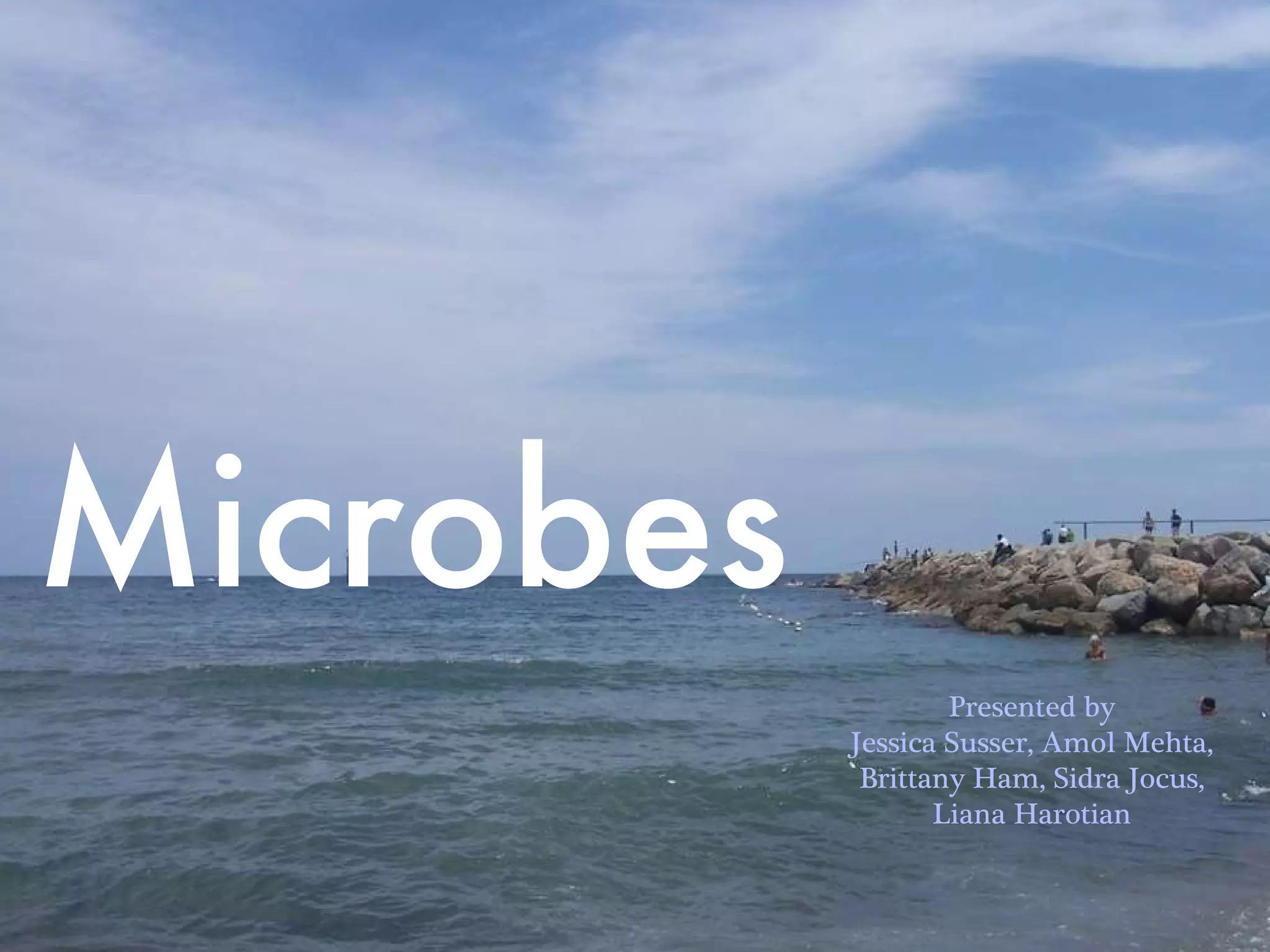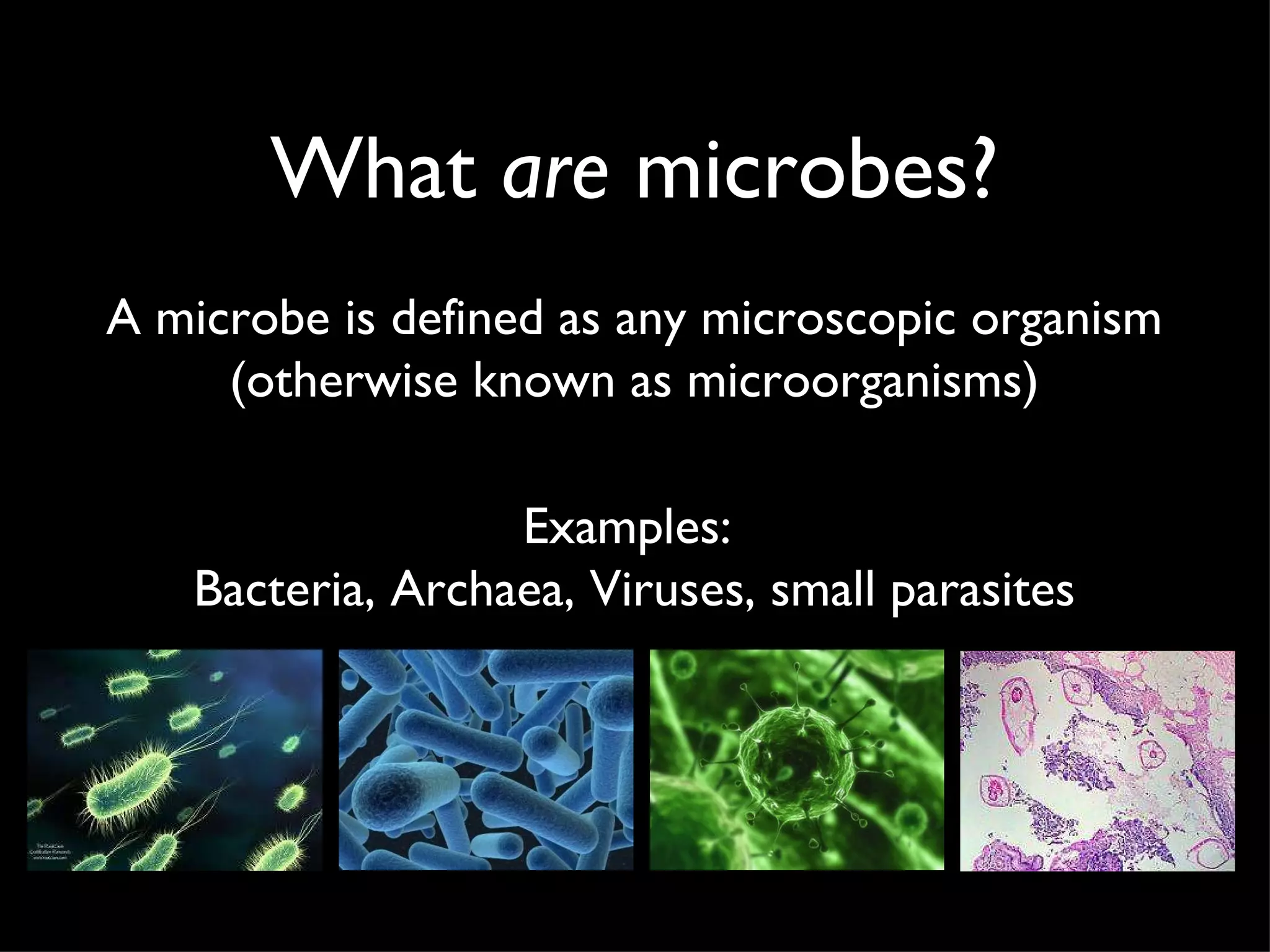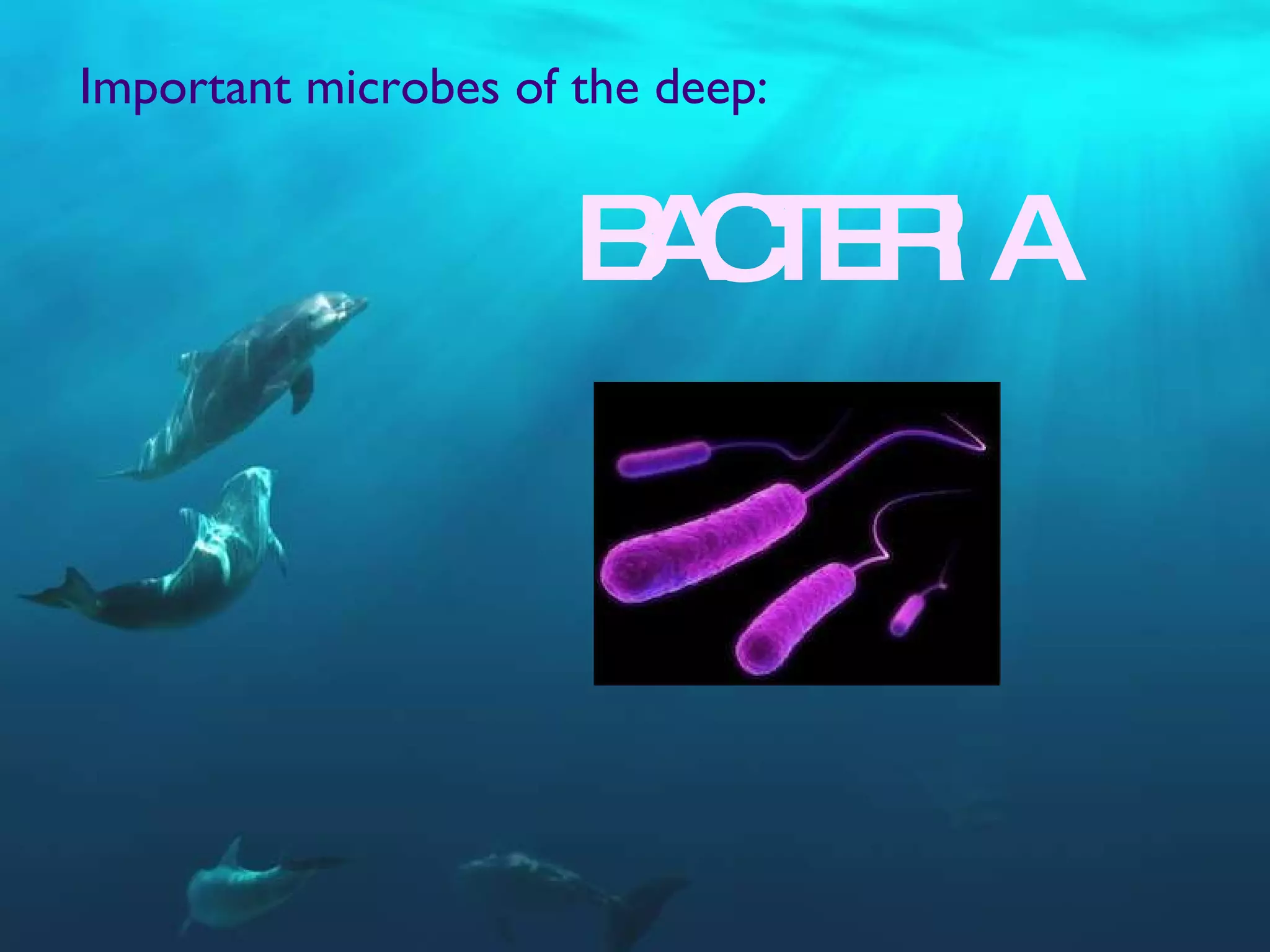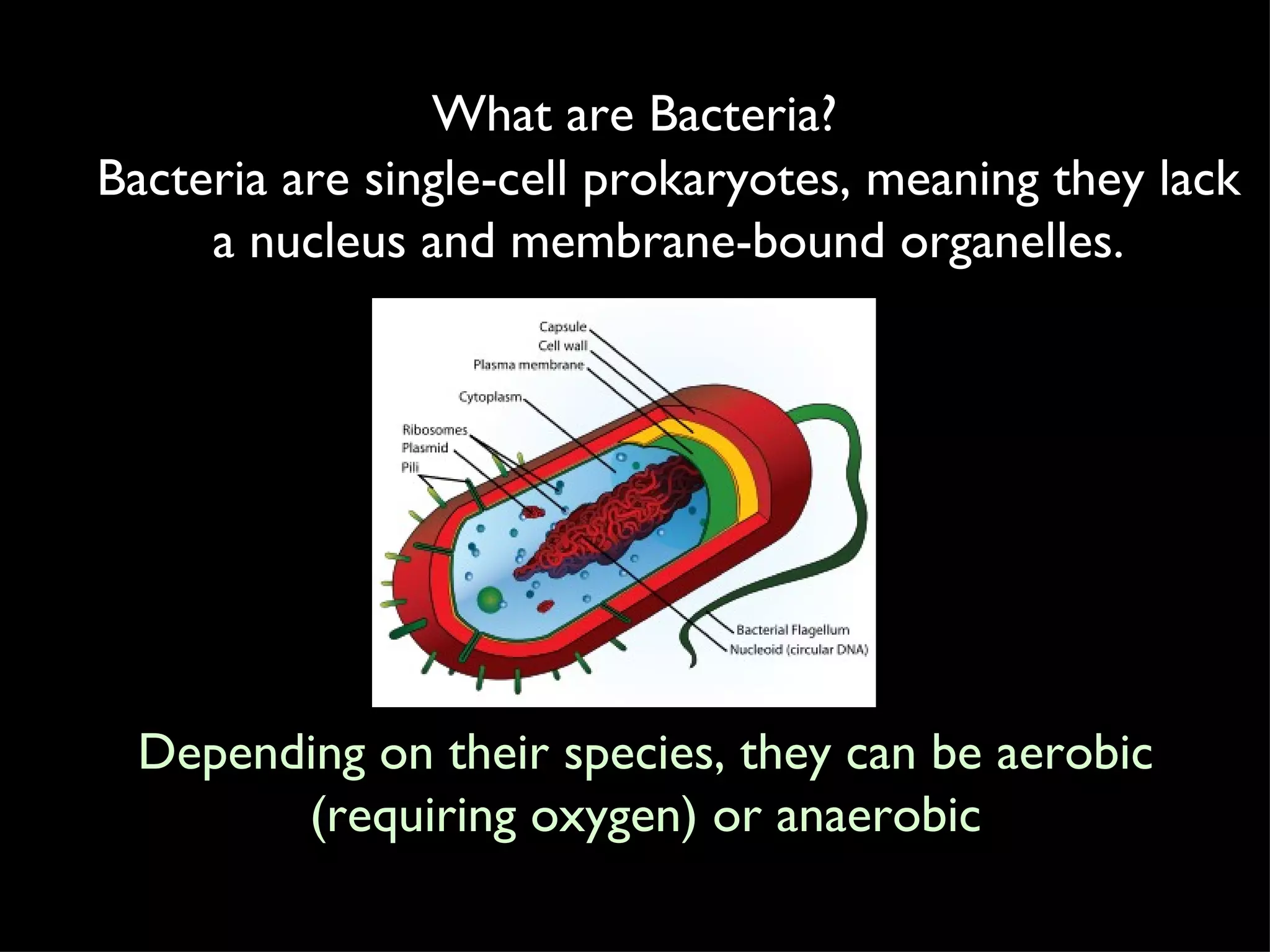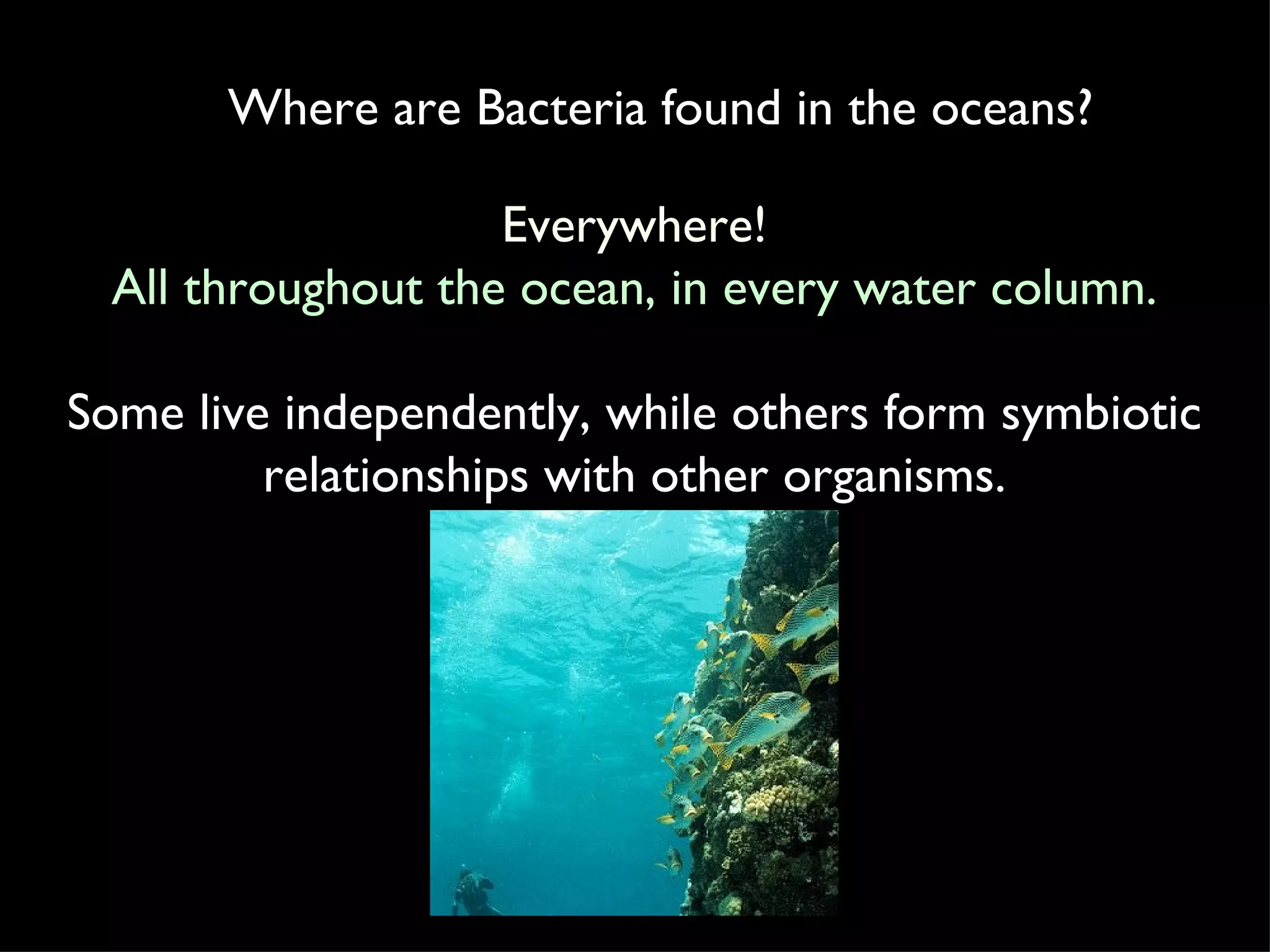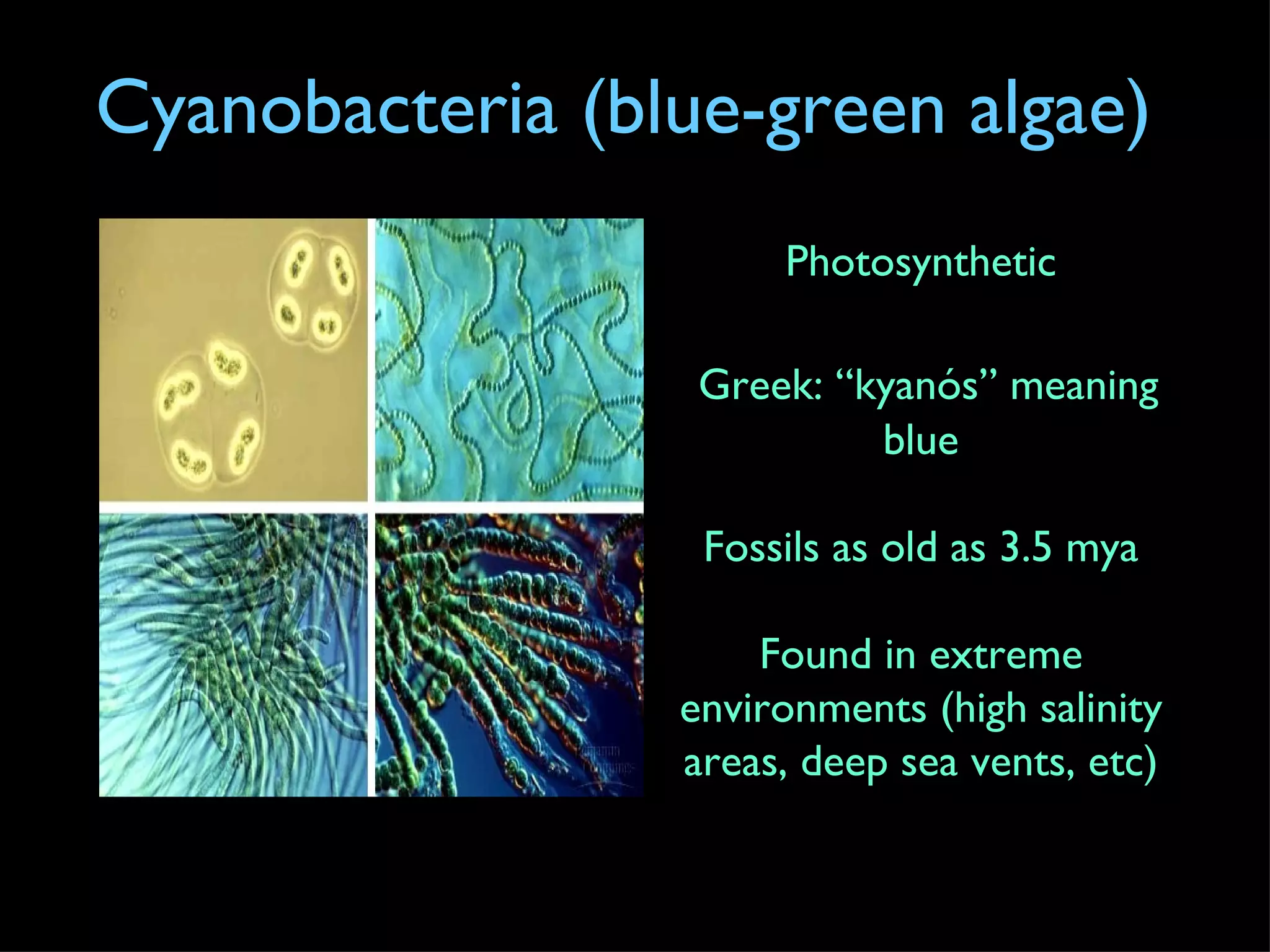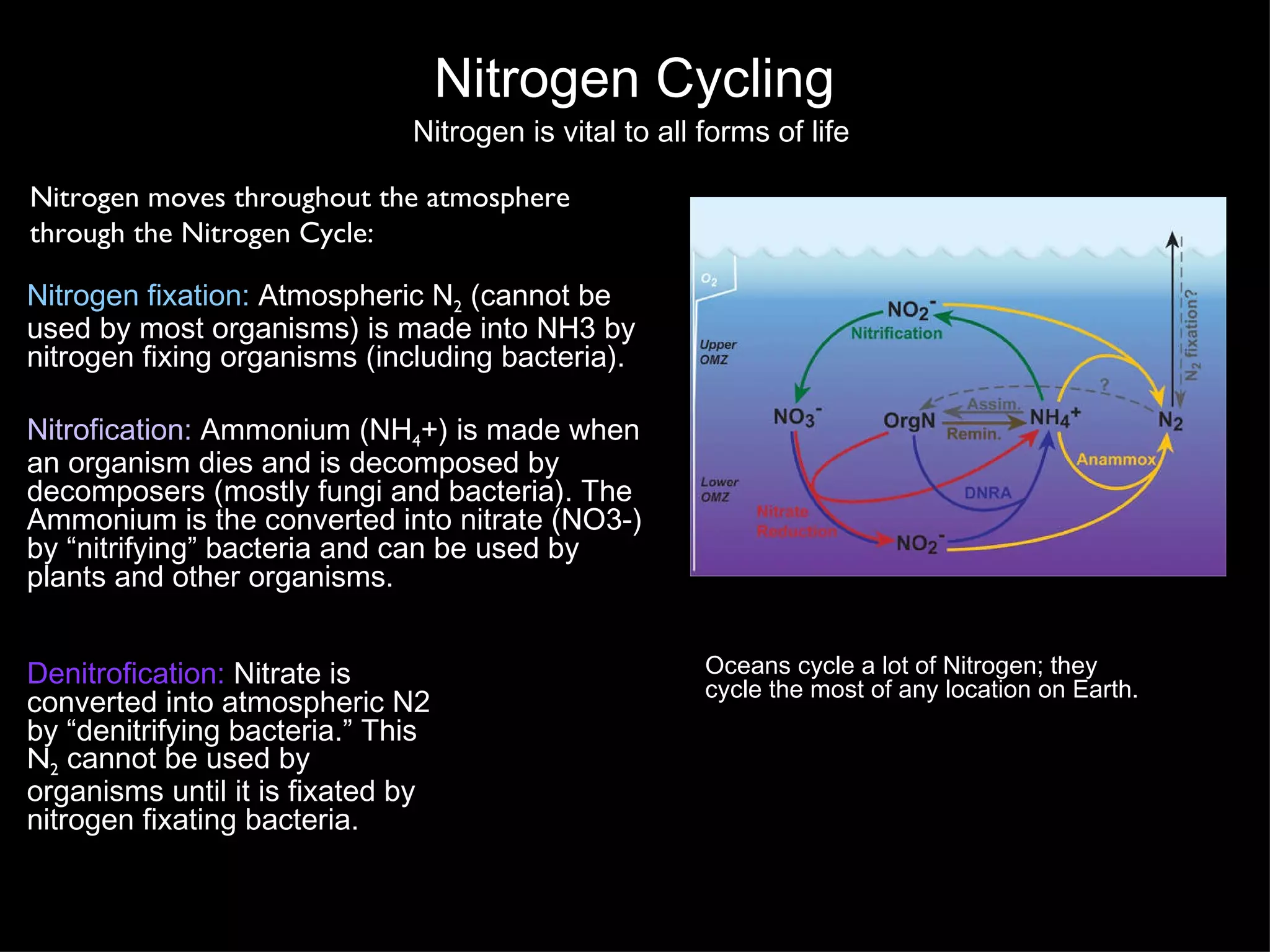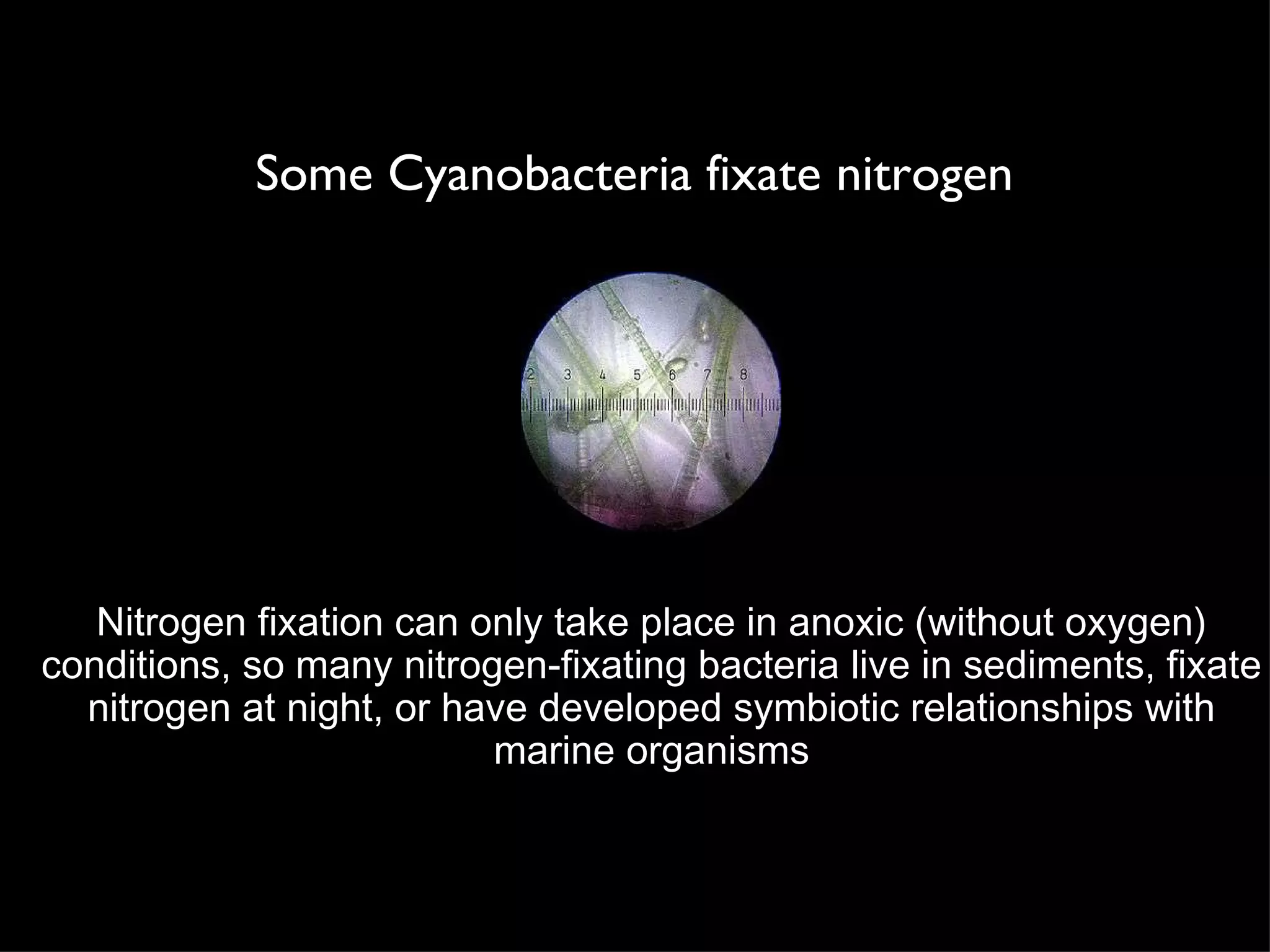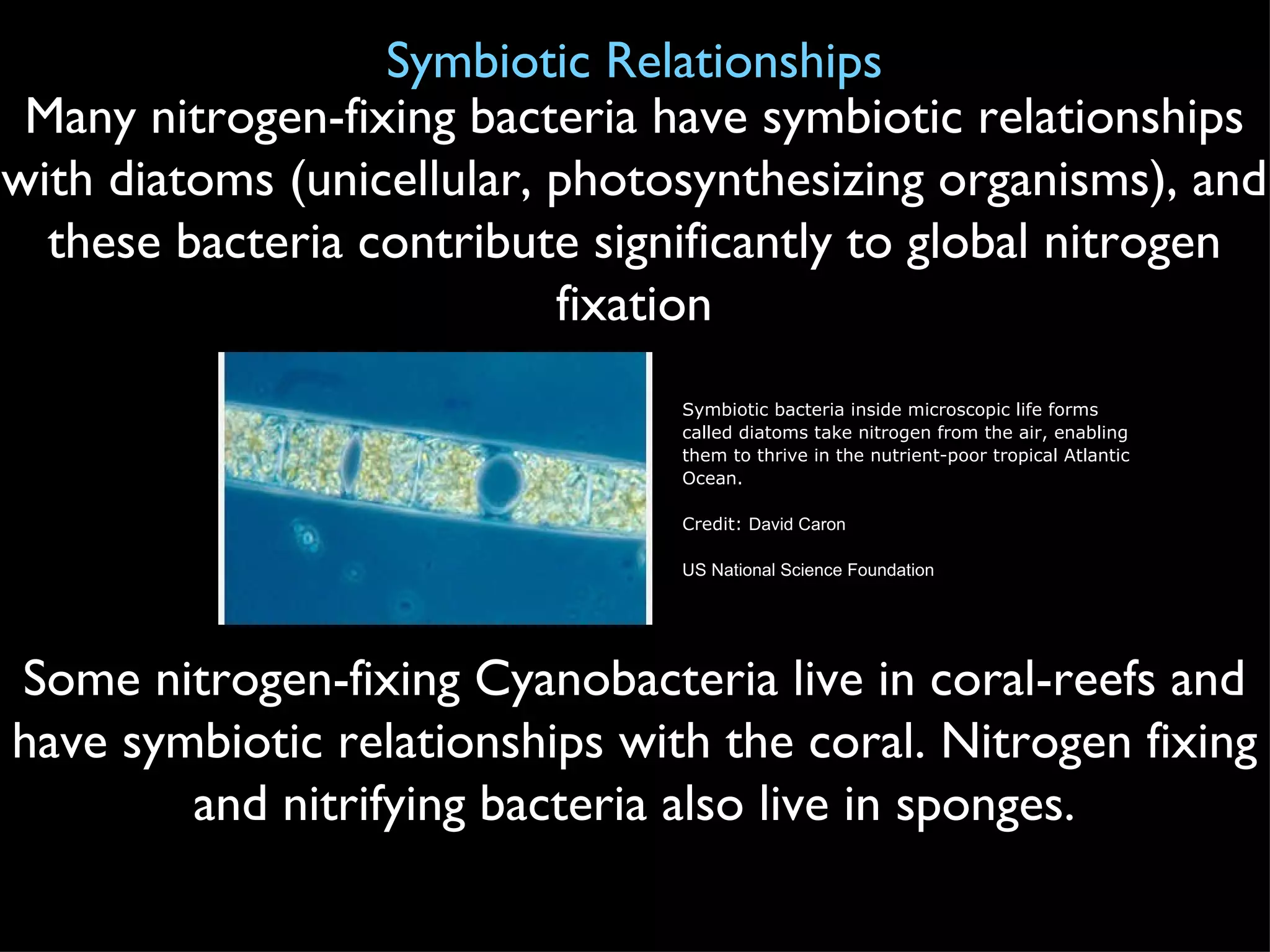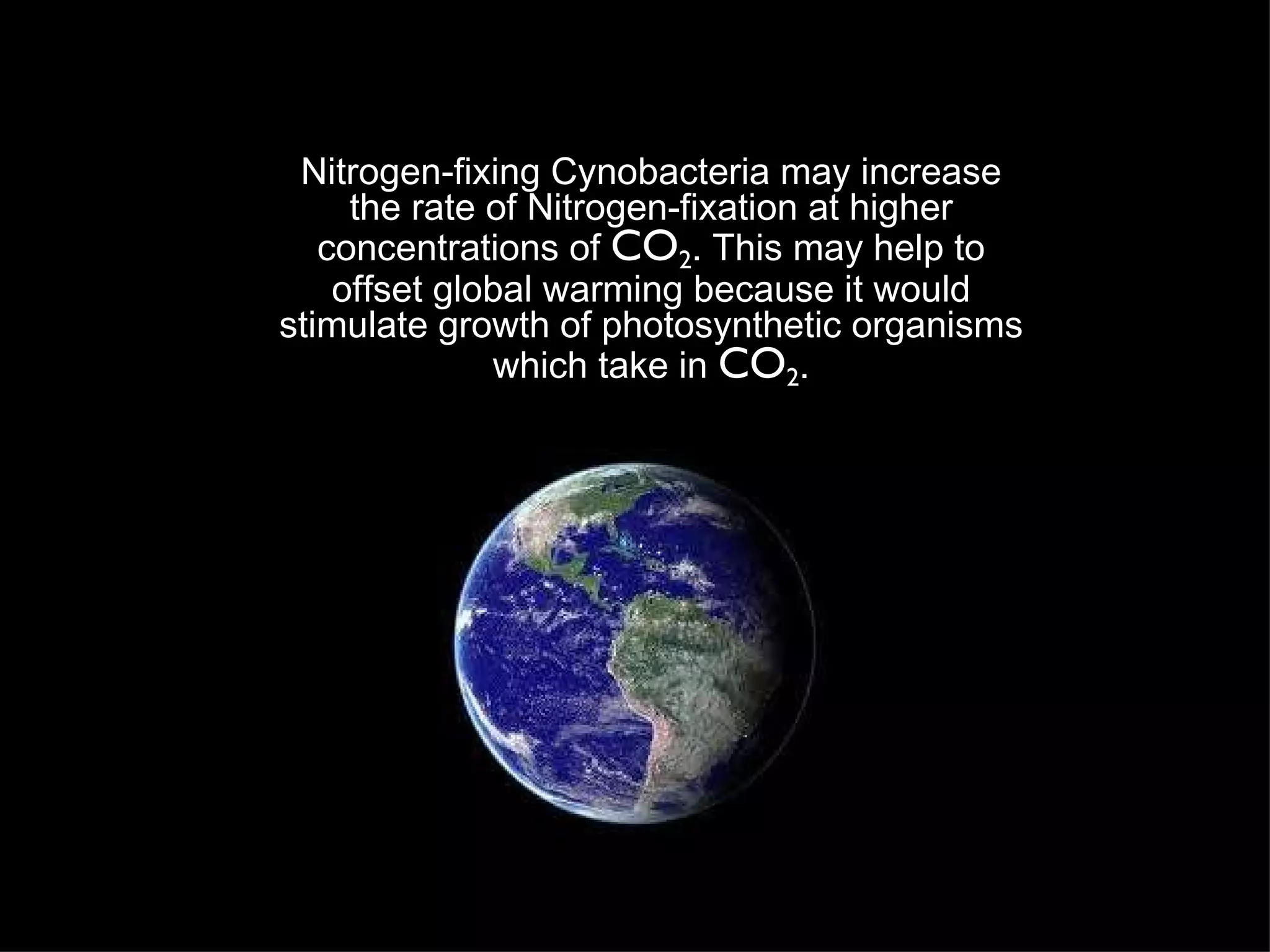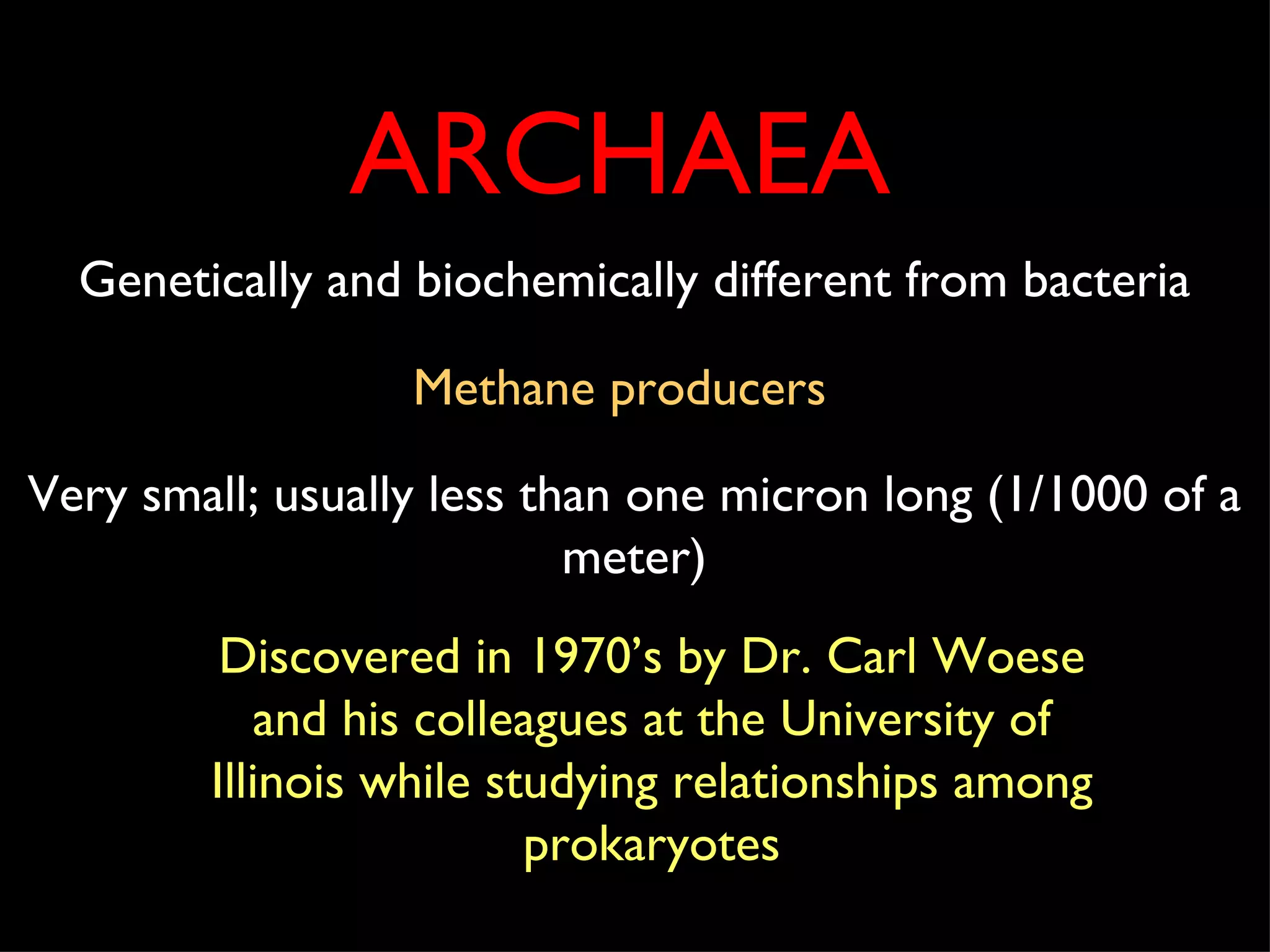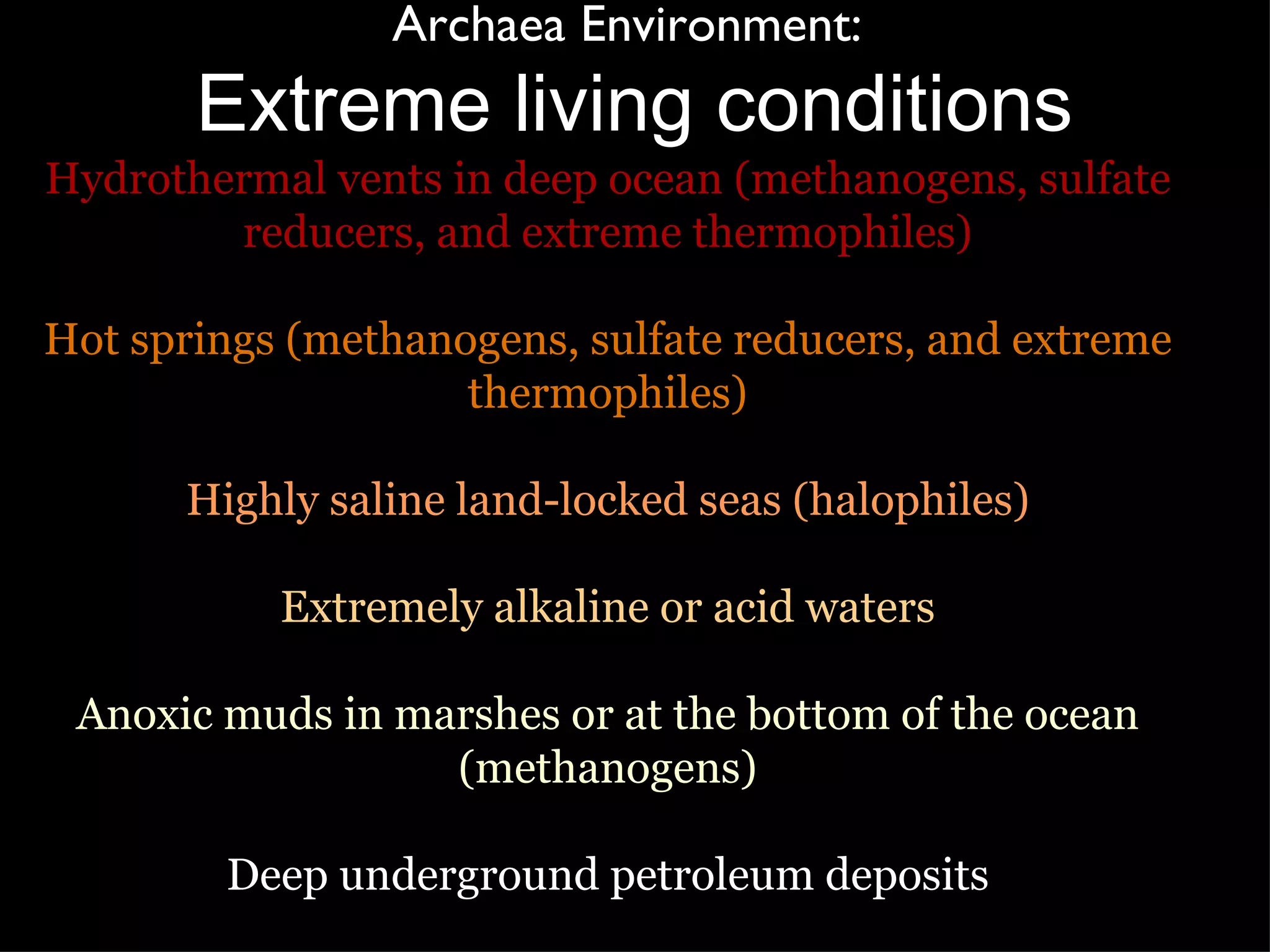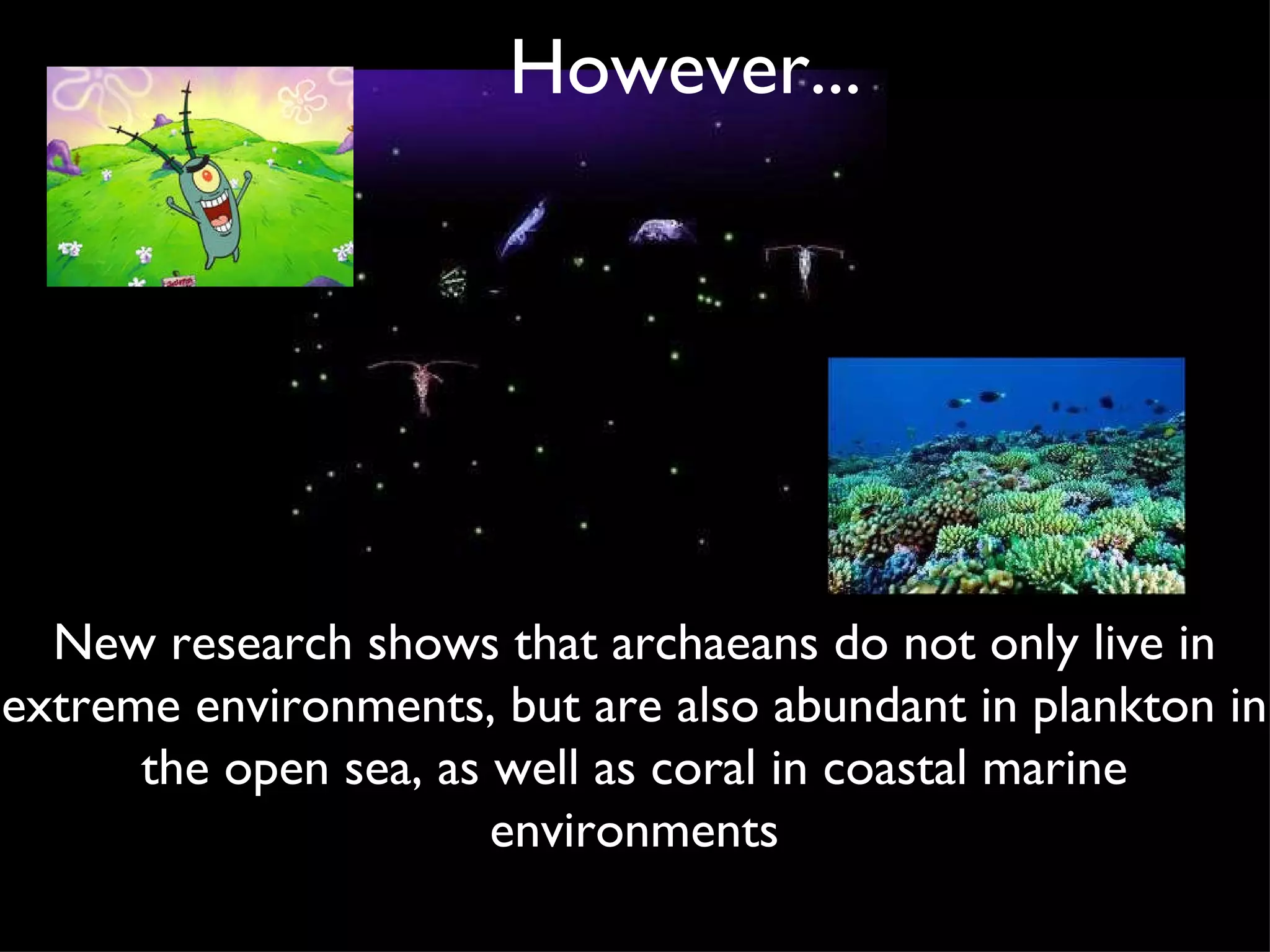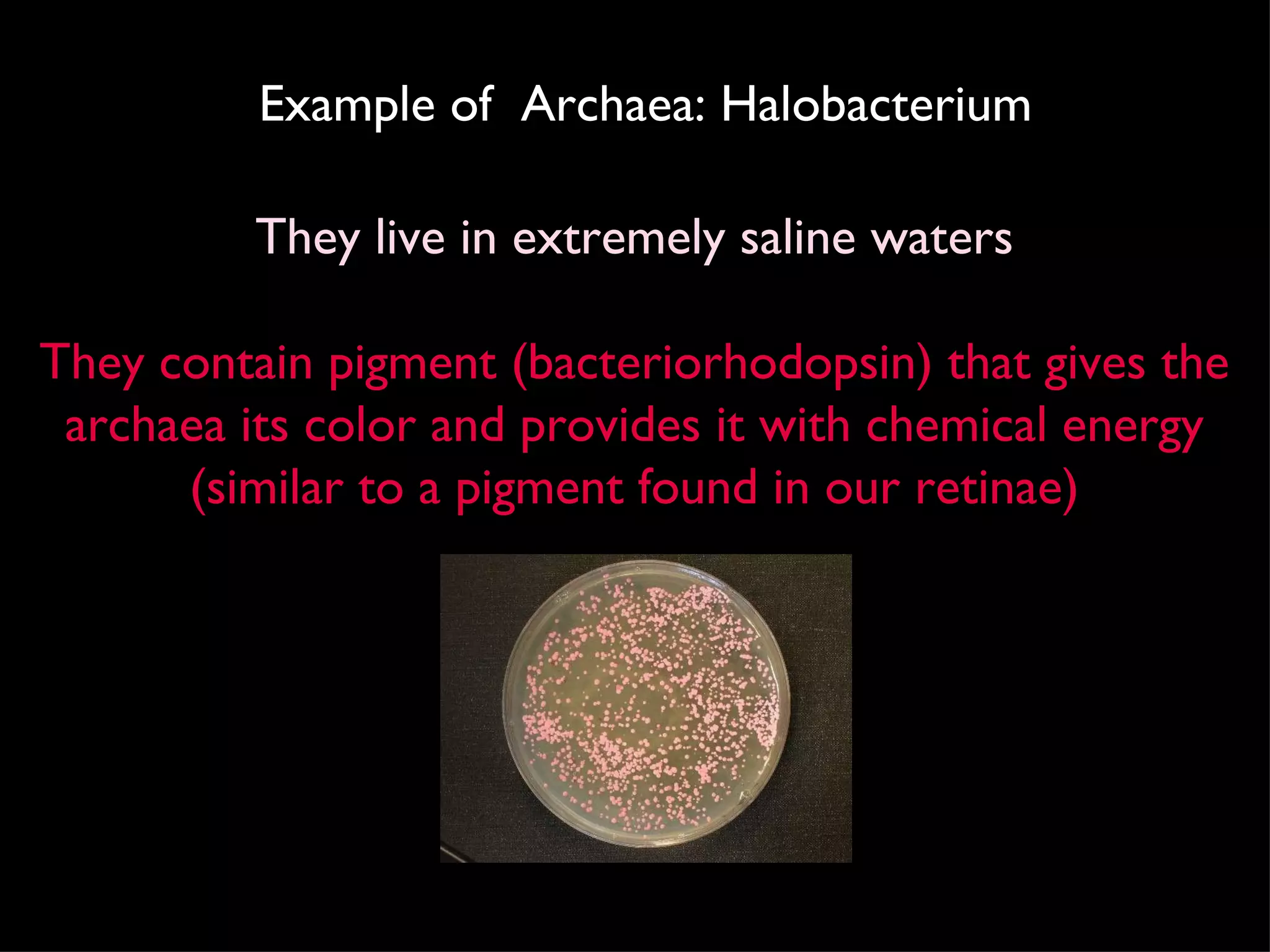Microbes are microscopic organisms that include bacteria, archaea, viruses, and small parasites. Bacteria are single-celled prokaryotes found everywhere in the oceans, either living independently or forming symbiotic relationships. Cyanobacteria are photosynthetic bacteria that account for 25% of Earth's photosynthesis and can thrive in extreme environments. Archaea are genetically distinct from bacteria and include methanogens and extremophiles found in places like hydrothermal vents and hot springs. Microbes play important roles in nitrogen cycling and forming symbiotic relationships in oceans.
